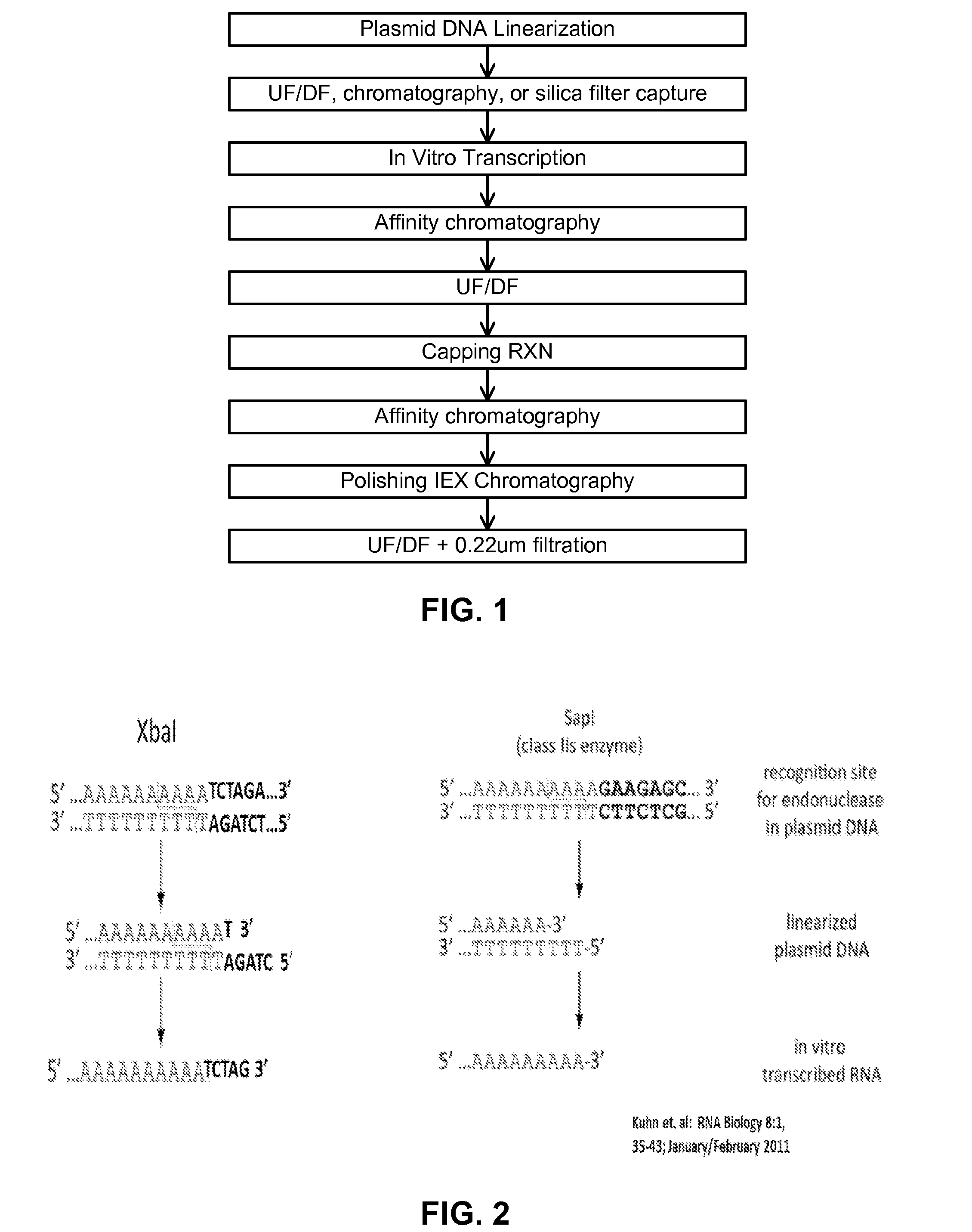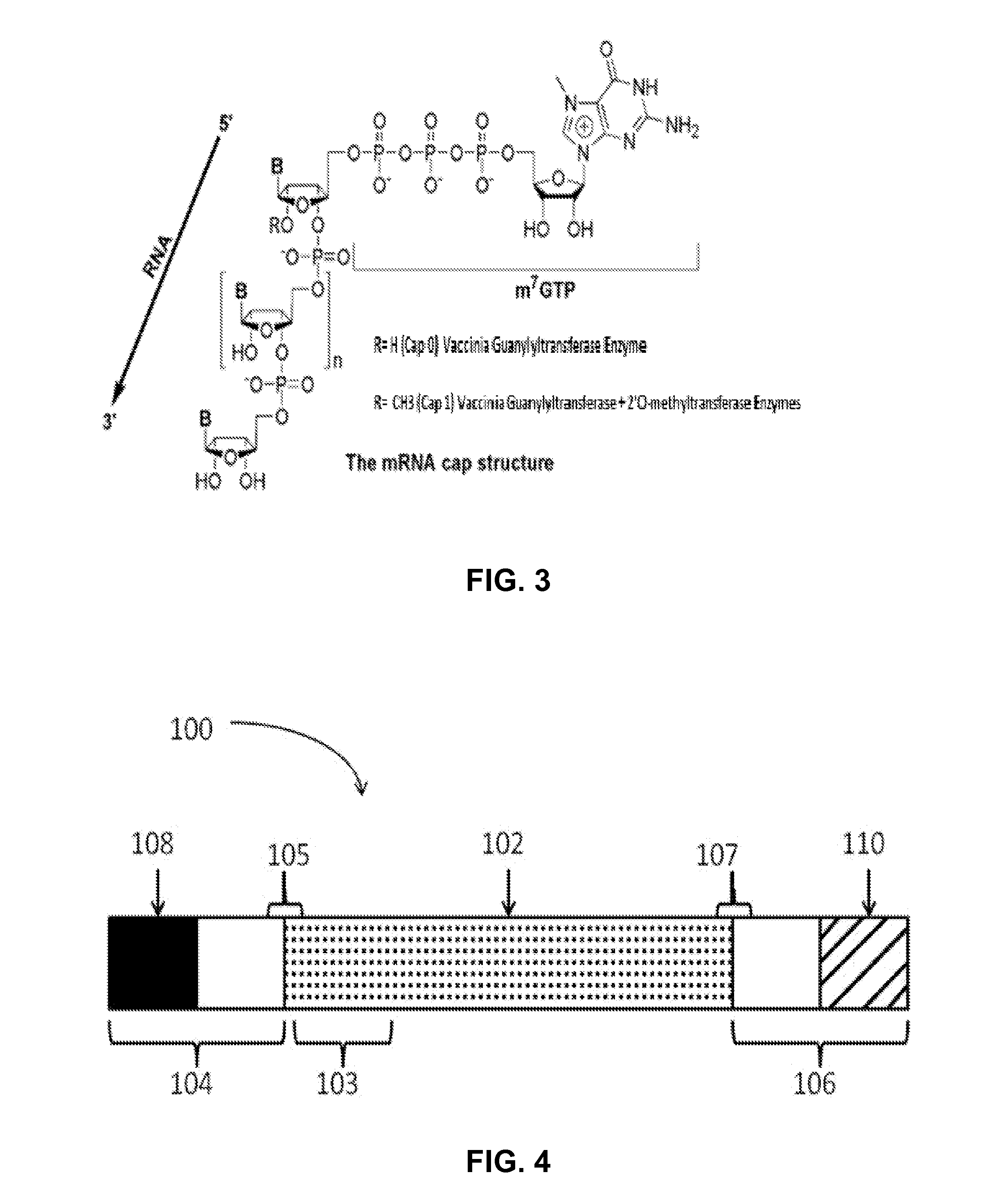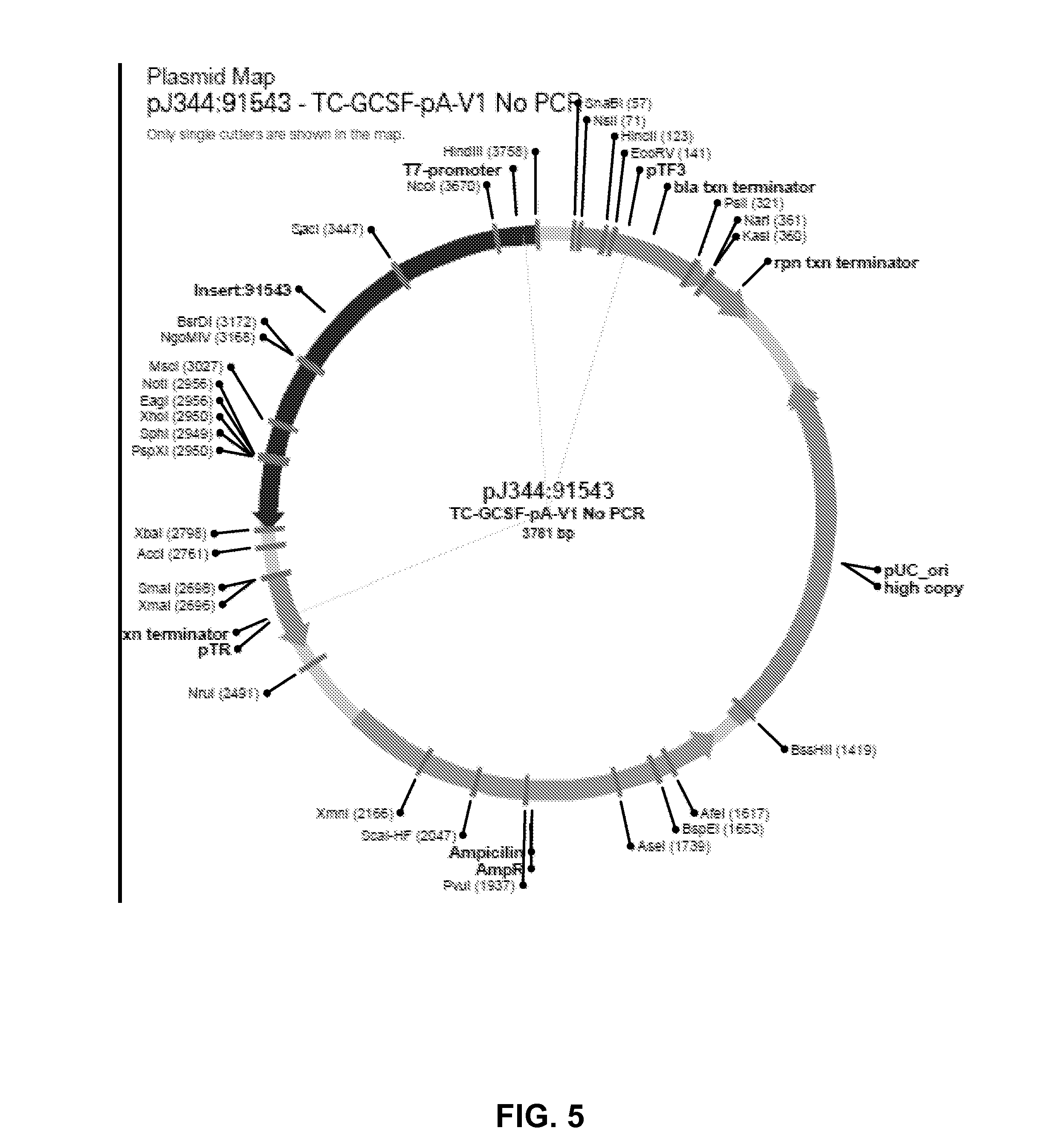Manufacturing methods for production of RNA transcripts
a technology of rna and production methods, which is applied in the field of manufacturing methods useful for rna transcripts, can solve the problems of difficult control of tail length and the evolution of tail length distribution in the rna, and achieve the effect of high purity and potency
- Summary
- Abstract
- Description
- Claims
- Application Information
AI Technical Summary
Benefits of technology
Problems solved by technology
Method used
Image
Examples
example 1
DNA Template with GCSF Gene
[0443]The plasmid pJ344:91543-TC-GCSF includes the coding sequence for GCSF (granulyte colony stimulating factor) and 141 nucleotide sequence coding for Poly A Tail and an XBaI restriction endonuclease recognition site immediately downstream of the poly A tail sequence tract. A plasmid map is shown in FIG. 5, and a plasmid DNA sequence is shown in FIG. 6.
[0444]An E. coli strain DH10B harboring above plasmid was grown in 250 ml animal-free broth with ampicillin. This process generated 1107 μg of plasmid DNA. The plasmid DNA was isolated and purified according to DNA2.0 standard operating procedures. Plasmid DNA yield and DNA homogeneity was determined using agarose gel electrophoresis. The insert (but not vector backbone) was sequence verified in both orientations using a capillary electrophoresis DNA analyzer.
example 2
[0445]The plasmid DNA template was linearized using the restriction endonuclease XbaI. The XbaI restriction digest reaction conditions were as follows:
Water25573.6μLPlasmid DNA (1145 μg / μL1879.9 μLBSA (100X)430.5μLBuffer 4 (10X)4305.0μLXbaI (20000 U / ml861 μLTotal vol43050 μL
[0446]The reaction proceeded at 37° C. overnight. The linearized plasmid was diafiltered into 10 mM Tris HCl pH 7.5 and concentrated to 959 ng / uL prior to use using 100 kDa MWCO Amicon spin filters (EMD Millipore).
example 3
In Vitro Transcription
[0447]The non-amplified, linearized DNA plasmid was used as a template for in vitro transcription. A 1 mL transcription reaction was performed utilizing 250 μg of plasmid template. Nucleotides ATP, GTP, 5mCTP (5-methyl cytosine triphosphate) and N-1-methylpseudouridine triphosphate were added at 7.5 mM each. RNase inhibitor (1000 U), inorganic pyrophosphatase (1U) and T7 RNA polymerase (7000U) were added. The final buffer conditions (1×) were as follows: 40 mM Tris HCl pH8, 40 mM magnesium acetate, 5 mM dithiothreitol (DTT), and 1 mM spermidine.
[0448]The in vitro transcription reaction proceeded for 4 hours at 37° C. under constant mixing. The total reaction yield was 5.4 mg RNA transcript. A 400 uL (40%) portion of the reaction was diafiltered into water and concentrated to 622 ng / μL using 100 kDa MWCO Amicon spin filters (EMD Millipore).
[0449]The results demonstrate successful, milligram scale production of RNA transcript with in vitro transcription using a n...
PUM
| Property | Measurement | Unit |
|---|---|---|
| pH | aaaaa | aaaaa |
| volume | aaaaa | aaaaa |
| concentration | aaaaa | aaaaa |
Abstract
Description
Claims
Application Information
 Login to View More
Login to View More - R&D
- Intellectual Property
- Life Sciences
- Materials
- Tech Scout
- Unparalleled Data Quality
- Higher Quality Content
- 60% Fewer Hallucinations
Browse by: Latest US Patents, China's latest patents, Technical Efficacy Thesaurus, Application Domain, Technology Topic, Popular Technical Reports.
© 2025 PatSnap. All rights reserved.Legal|Privacy policy|Modern Slavery Act Transparency Statement|Sitemap|About US| Contact US: help@patsnap.com



